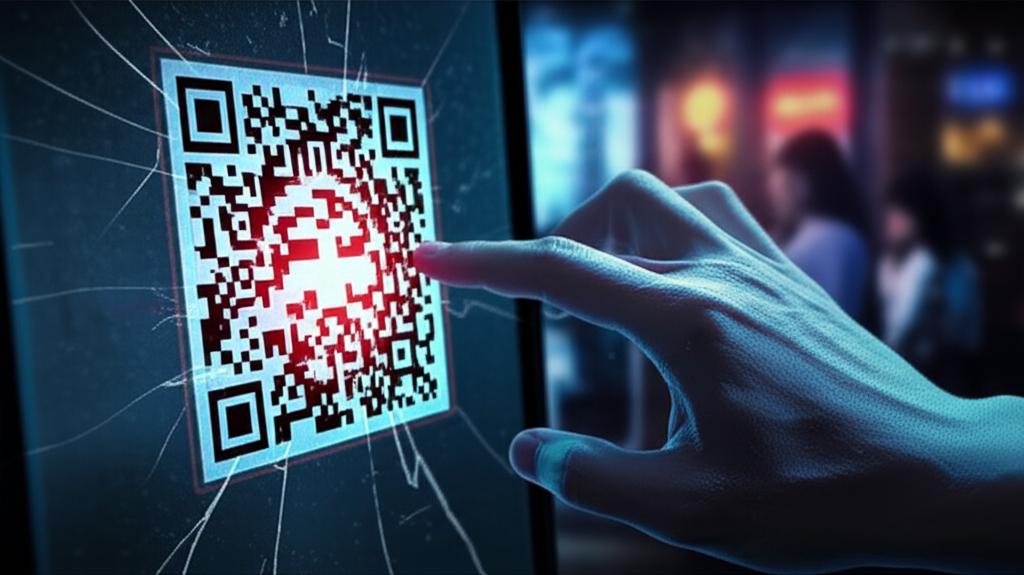Unmasking the Dangerous Threat: A Guide to Quishing (QR Phishing) Prevention
In our increasingly digital world, QR codes have become ubiquitous, simplifying everything from menu ordering to payment processing. However, this convenience also opens a new vector for cybercriminals: Quishing, a sophisticated form of QR Phishing. It’s a dangerous threat that leverages the trust we place in these simple black-and-white squares to steal sensitive information, and understanding it is your first line of defense.
What Exactly is Quishing?
Quishing, short for QR Phishing, is a cyberattack where malicious actors use deceptive QR codes to trick individuals into divulging personal information, financial data, or login credentials. Instead of clicking a suspicious link in an email, victims scan what appears to be a legitimate QR code, only to be redirected to a fake website, download malware, or initiate unauthorized transactions.
This method is gaining traction because, unlike email phishing, QR codes bypass many traditional email security filters, making them an effective tool for scammers to reach unsuspecting targets.
How Quishing Works: The Anatomy of a QR Scam
The mechanics of a Quishing attack are deceptively simple yet highly effective:
- Malicious QR Code Creation: Cybercriminals generate QR codes that look identical to legitimate ones. These codes, however, contain links to phishing websites, download links for malware, or commands for unauthorized actions.
- Deceptive Distribution: Attackers deploy these malicious QR codes in various ways:
- Physical Tampering: Placing sticker overlays of fake QR codes on top of legitimate ones in public places (e.g., parking meters, payment terminals, advertisements).
- Digital Insertion: Embedding fake QR codes in phishing emails, social media posts, or even compromised legitimate websites.
- Fake Materials: Distributing flyers, posters, or business cards with malicious QR codes.
- Victim Interaction: An unsuspecting user scans the QR code, believing it to be genuine.
- Redirection & Exploitation: The user is then redirected to a fraudulent website designed to mimic a legitimate service (e.g., bank login, payment portal, social media site). Here, they are prompted to enter sensitive information, which the attackers then capture. Alternatively, scanning the code might initiate a download of malicious software onto the device.
Common Quishing Scenarios to Watch Out For
Quishing attacks can appear in many guises. Here are some common scenarios:
- Fake Payment Prompts: A QR code on a parking meter, restaurant table, or utility bill that redirects to a bogus payment portal.
- Discount Scams: An advertisement offering a significant discount, accessible only by scanning a QR code, which then leads to a phishing site requesting personal details.
- Login Credential Theft: A QR code supposedly for public Wi-Fi access or a service login, leading to a fake authentication page.
- Customer Service Traps: QR codes on fake support pages or physical products that link to fraudulent customer service numbers or websites.
- Public Service Impersonation: QR codes purporting to be for government services, health updates, or public surveys that collect personal data.
Why Quishing is So Effective and Hard to Detect
Several factors contribute to the success of Quishing attacks:
- Bypasses Traditional Filters: Email filters are designed to spot malicious links in text. QR codes, as images, often slip past these defenses.
- Instant Gratification & Trust: Users have grown accustomed to the convenience of QR codes and often scan them without much thought or scrutiny.
- Visual Camouflage: A malicious QR code looks identical to a legitimate one, making visual inspection nearly impossible for the average user.
- Mobile-Centric Attack: Attacks are initiated on mobile devices, where security awareness might be lower, and warning signs (like unusual URLs) are harder to spot on smaller screens.
Empower Yourself: Practical Tips to Prevent Quishing Attacks
Protecting yourself from Quishing requires vigilance and a few smart habits:
- Inspect Before You Scan: Always check the physical QR code for any signs of tampering, such as stickers overlaid on top of original codes, blurred images, or signs of alteration.
- Verify the Source: Be suspicious of QR codes in unexpected places or from unsolicited communications. If you receive a QR code via email or text, confirm the sender’s identity through another channel.
- Use a Secure QR Scanner: Some modern smartphone cameras and dedicated QR scanner apps offer built-in security features that can warn you about suspicious URLs before you proceed.
- Preview the URL: Many QR code scanners will display the destination URL before opening it. Always take a moment to examine the URL for legitimacy. Look for ‘HTTPS’ (secure connection) and ensure the domain name is correct and free of typos.
- Avoid Public Wi-Fi for Sensitive Transactions: When dealing with payments or personal information, use a secure network or cellular data.
- Enable Multi-Factor Authentication (MFA): Even if your login credentials are stolen via Quishing, MFA provides an essential second layer of security.
- Educate Yourself & Others: Stay informed about the latest cyber threats and share this knowledge with friends, family, and colleagues. Awareness is a powerful defense.
Conclusion: Stay Safe in a QR-Centric World
Quishing represents a significant and evolving challenge in the cybersecurity landscape. As QR codes become more embedded in our daily lives, so too will the risks associated with their misuse. By adopting a skeptical mindset, diligently inspecting QR codes, and understanding the tactics of these dangerous threats, you can significantly reduce your vulnerability and protect your digital life from these insidious attacks.







